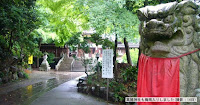Wind Power? Not So Fast, Says TEPCO, While Others Are More Optimistic

Japan's largest wind power company, Eurus Energy, is in the news as TEPCO has announced that it will sell a part of its shares in the company, that is also owned by Toyota through a trading house connected to the car maker. Why is TEPCO not holding on to shares in a company that could do very well as the nation turns from fossile fuels and nuclear energy, to renewable energy sources (water, solar, wind, biogas)? It has not been much noted, but somehow, Japan's wind turbines managed to survive the massive earthquake and tsunami on March 11, 2011. As shaken as our confidence is in nuclear energy, it is perhaps telling that main streem media has not told the story of how the turbines in Kamisu, southern Ibaraki prefecture, perfectly managed to survive the forces of nature. The seven turbins were unhurt and continued to produce electricity. In fact, none of Japan's wind turbines, representing over 2300 MW of capacity, failed as a result of the disaster, according to the Japan W...






